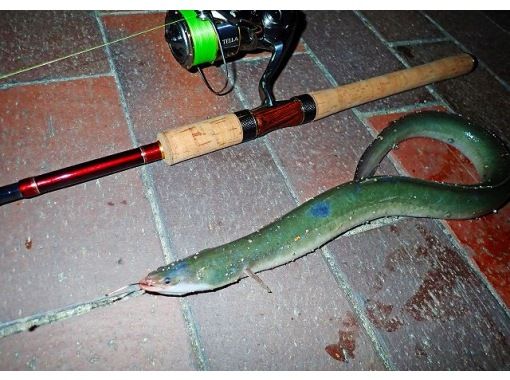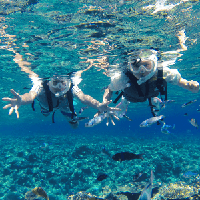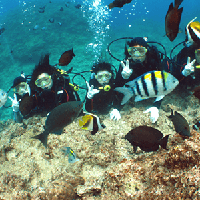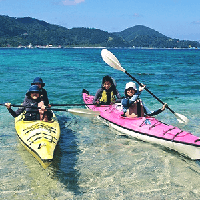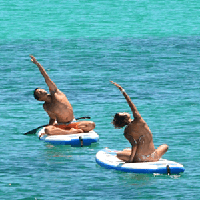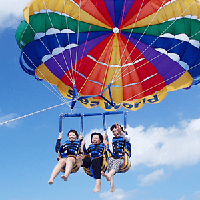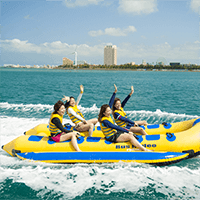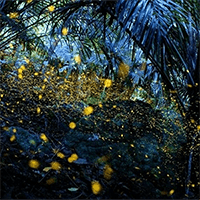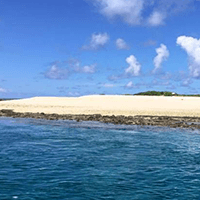- Age 3~Age 60
- 2~3 hours
- 08:45 / 13:15
We will hold a tour to capture six kinds of dragonfly nymphs. Travel by electric bicycle, time limit is 2 hours + 30 minutes of explanation, with explanation of how to raise dragonflies and dragonflies. 1. Black dragonfly nymph capture rate 100% 2. Blue dragonfly nymph capture rate 50% 3. Ancient dragonfly nymph capture rate 30% 4. Dragonfly nymph capture rate 20%. Capturers will receive a dragonfly brooch (worth 1000 yen) 5. Common dragonfly nymph capture rate 10%. Capturers will receive a capture bucket + bubble set (worth 1500 yen) 6. Silver dragonfly nymph capture rate 3%. Capture rate is 3 out of 100 times. Capturers will receive a net + bucket + bubble (worth 3000 yen). What you need to bring: Marine shoes (from the end of March to October), hat, drink, plastic case for taking things home, bubble tea, marine shoes from spring to autumn, what we will prepare: rubber boots (from November to mid-March), net, storage bucket, nymph guide, information materials We look forward to your participation. Nogawa Nature School Sonoda (Tosshi)
- Age 3~Age 12
- Over 6 hours on the day
- 09:00
The second summer vacation special (planned to be held with a small number of people) is a tour that only children can participate in. Parents are only required to pick up and drop off their children. (Elementary school students who can travel to Chofu Station by train can be picked up at the station. Drop-off will also be to Chofu Station.) This is a river rummaging experience tour with the goal of capturing and observing 10 types of river creatures. ▼Schedule・9:00: Meet at Fukadai Nigiwai no Sato in Chofu City・9:00-30 minutes: Lecture on creatures (parents can also participate)・10:00-11:30: Upstream tour (walking) ⇒ Target: Oyanirami, Oniyanmaago, Buddha loach, Crayfish, Snake Black Dragonfly, Crane fly larvae, Marsh shrimp, Crayfish, Loach, Moroko, Yamakagashi (observation only)・12:00-13:00: Lunch at a nearby restaurant (nearby restaurant) Walking distance, lunch will be covered by the host. )・From 13:30: Midstream tour ⇒ Target: Japanese mitten crab, Japanese minnow, red ear turtle, Japanese pond turtle, soft-shelled turtle, dragonfly nymph (early summer only), marsh shrimp, crayfish, loach, Japanese scorpionfish, carp, crucian carp, killifish, mosquitofish (observation only), bullfrog (observation only), Japanese rat snake・Around 15: End (Meet at Fukadai Nigiwai no Sato, Chofu City/Disband) Items to bring: Marine shoes (from the end of March to October), swimsuit, rash guard, spats, drinks, hat, backpack, plastic case for takeaway + bubble (battery-powered oxygen supply machine) Things to prepare on your side: Car transportation, rubber boots (from November to mid-March), net, storage bucket This is a tour mainly about exploring the river. Thank you for your cooperation.
- Age 3~Age 70
- 2~3 hours
- 09:00 / 11:30 / 14:00 / 16:30
Held from spring to autumn Fishing for Japanese eels in the brackish waters of rivers Part 1: 8:00-10:30 Part 2: 10:30-13:00 Part 3: 13:30-16:00 Part 4: 16:00-18:30 This is a tour to fish for eels at the mouths of rivers that run through Tokyo. Japanese eels are born in the western waters of the Mariana Islands. They grow in rivers not only in Japan but also in East Asia, including China, Taiwan, and the Korean Peninsula, and are known to return to the Mariana Islands to spawn. Japanese eels (Anguilla japonica), which belong to the Anguilla genus of the eel family, are widely distributed in East Asia, including Japan, China, Taiwan, and Korea. In Japan, they mainly live south of Honshu, but there have been cases of them being caught in Hokkaido. Rental tackle, fishing rod, and equipment are included, so you can participate empty-handed. Two patterns of fishing will be done: casting fishing and plastic bottle tackle fishing, using earthworms as bait. While waiting for the tackle, you can fish for goby at your feet. The main target is eels, but sometimes you can also catch goby, crabs, and seigo. The tour lasts about 3 hours. Please bring a headlamp, a handy light, and drinks. *If you want to take the fish home, please bring an aeration device (battery-powered bubbler) to prevent oxygen deficiency, a plastic case or fishing bucket to prevent escape, and a cooler box. By train: 15 minutes walk from JR Joban Line or Tokyo Metro Chiyoda Line By car: Please use a nearby parking lot Meeting place: Near the Seven-Eleven Katsushika Kosuge 1-chome store. We will send you a map in advance, so please walk to the point. Migration of Japanese eels Japanese eels spawn in the summer in the waters west of the Mariana Islands in the Pacific Ocean. After hatching, they become willow-leaf-shaped larvae called leptocephalus. Glass eels are carried by ocean currents and reach East Asia in about six months, then transform into long, cylindrical glass eels and ride the high tide into rivers. After that, their transparent bodies start to take on color, and they are called yellow eels. During the yellow eel stage, eels grow large, and eat a variety of foods, including shrimp, crabs, small fish, and insects. The environment in which Japanese eels spend their growth period is wide, from coastal areas to the upper reaches of rivers, and includes not only freshwater areas but also brackish water and seawater. After several years to a dozen years, when they grow to a size of about 40 cm or more for males and about 50 cm or more for females, they begin to mature and are called silver eels. Silver eels leave their familiar rivers and coastal areas and travel to spawning grounds from autumn to winter. They reach the spawning grounds in the Marianas in about six months, spawn, and then end their life. PS: The minimum number of participants is 5 or more.
最近チェックしたプラン
Please wait a moment
![[Tokyo/Chofu] *Family-friendly * From 9:00 AM, 13:00 PM - 6 types of dragonfly hunting tour (free rental of electric bicycle stupid boots with front and rear child seats)の画像](https://img.activityjapan.com/10/48727/10000004872701_atFOJjl6_3.png?version=1708931523)
![[Tokyo, Chofu] Summer Special 2nd edition, upper and middle stream conquest, children only participation, 6 hours, 10 species captureの画像](https://img.activityjapan.com/10/47177/10000004717701_atFOJjl6_3.png?version=1678332482)
